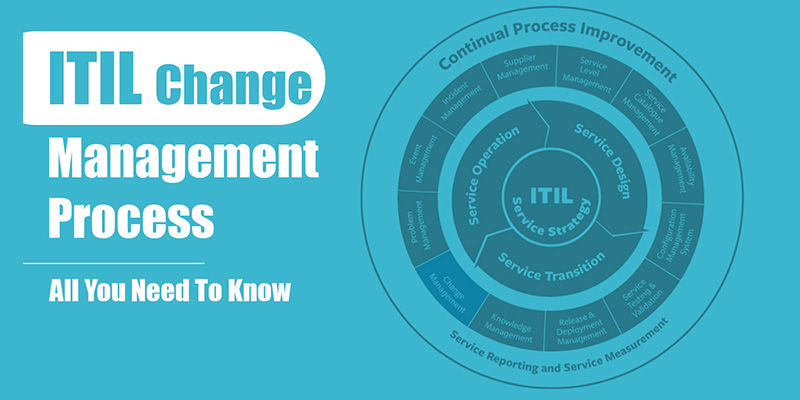The wide gap definitely speaks volumes on the massive success of the DevOps culture to a certain extent. However, IT professionals are aware and acknowledge that speed minus proper oversight can be highly damaging, particularly for those businesses that have joined the DevOps bandwagon recently or are beginners pertaining to the Change Management Processes.
However, if your organization desires stability, as well as, speed, merging the DevOps toolchain and the ITIL (Previously Information Technology Infrastructure Library) Change Management Processes may not be rocket science if done in a proper manner.
Also Read: Amazon Web Services Have Planned to Open Data Centers in South Africa
Today, several global IT companies face a big challenge in the form of how to comply with the ITIL process as their teams migrate into Agile, DevOps movement. To cut it short, it is important to know how an organization can manage these two apparently conflicting objectives from 2 distinct IT organizations – one measuring the project success and concentrating the development agility while the other using quality as the yardstick to measure success.
Quality is measured in an IT enterprise by the volume of incidents induced by changes in production. We are referring to incidents, which are triggered due to changes occurring in the production. Any team should have a target to ensure that is zero. A big question while integrating DevOps and Change Management is to make sure of achieving this goal while not affecting the agile teams’ speed. An agile solution for this problem is a DevOps solution.
For instance, an organization can form a scrum team for addressing a problem like this. The team can work to automate and make the process simpler while keeping a strong focus on improved productivity and quality. When such a team is formed, they have the process owners of the Change Management process, as well as, representatives from development technologies.
So, the mantra should be automation without making the process complex, keeping a strong focus on productivity, speed, and quality
Check out the following steps for the seamless integration of Change Management processes within the ITIL framework and the DevOps movement:
1.All changes should be centralized on a single platform
Think of all the benefits of all changes are sent through a single channel! There is no fear of something getting lost. Plus, the CAB or the change advisory board considers all the changes. So, begin a new process of change management properly by aggregating all the changes, incident management, and problem into a single platform. It should have the ability to streamline all changes into a pipeline.
2. Ensure high transparency by setting up standards
If an organization chooses sophisticated change management suites for their IT Service Management help enables their IT professionals to experience end-to-end visibility through documentation and advanced visualizations. A ticket with ad-hoc reports that can be exported and configurable dashboards can be powerful. Such features can elevate internal communication and also ensure that compliance reports are more simplified and increase their accuracy level.
3. Classify or arrange proposed changes
It is not necessary for each proposed change to have a group of IT staffs being associated with it. Having said so, there are some proposed changes that do need a team of IT professionals behind them. It is imperative for organizations to track the earlier IT work orders to get a fair idea of the different profiles of change tickets that are relevant for their businesses.
4. The necessity to establish strong and vigorous policies
After a business has categorized the possible changes, it is time to develop a series of commands to process each of these changes. The lead times for change may slow down for a business when they do not announce clear policies prior to migrating over to DevOps completely.
Also Read: Lack of standardization hampering the unpreceded growth of IoT?
5. Automation is the key
The unprecedented success of DevOps is due to the innovations made by the movement in fields like machine learning and automation. Advancements such as automated regression testing can enhance the quality of a change resolution as they can cross-check whether they are valid or not vis-à-vis configurations or applications in a simulated environment. While the DevOps teams could also do such tasks manually, it would be labor intensive and extremely time-consuming. Plus, the audited systems are susceptible to human errors.
6. The time now to integrate with DevOps
When all the other steps are taken care of, your organization is all set to merge with the DevOps software. It is also time for you to choose an IT Service Management platform, which enjoys compatibility with 3rd party applications and can be used by the DevOps team on a regular basis.
A modern miracle associated with the practices and principles of DevOps is that several parts of any ITIL process can be automated now, thus resolving many big challenges, particularly in the deployment, release, and configuration management processes.








